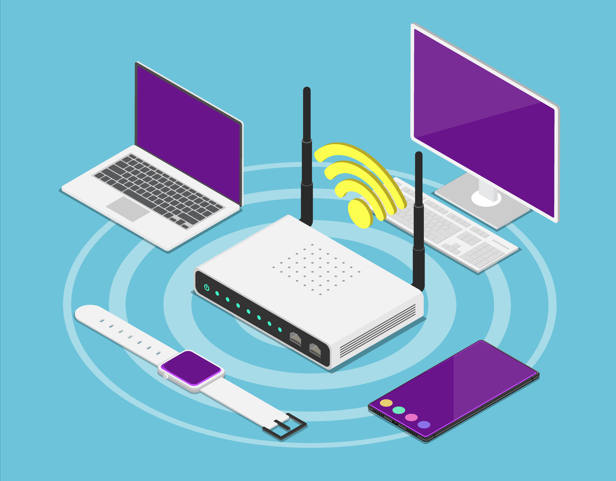
Whether you spend most of your time on the internet at home or at the office, it is important that you maintain the security of your Wi-Fi network. These days, just as much of life happens online as it does in-person – maybe even more! – making Wi-Fi networks a major target of cybercriminal activity. From neighbors connecting to your network without permission to cybercriminals infecting or stealing your data, there are numerous things that should make securing your Wi-Fi network a top priority.
Place Router In A Central Location
By placing your router in a central location in your home or office, you can ensure that your Wi-Fi signal reaches each device in your area with minimal signal reaching outside the walls of your space. With this strategic placement, you can enjoy the best connection quality within your space without worrying about strong signals reaching your neighbors. A central placement reduces the chances of people outside your home or office being able to connect to your network.
Create a Strong Password
As with any other internet-related account, you must ensure that your Wi-Fi requires a password, that you create, and that the password is strong and complex. It might also be worth it to change this password occasionally to boost your network’s security. You should avoid passwords that can be easily guessed, like names, birthdays, or simply the word “password” or “password123.” If you are worried you will not be able to remember your Wi-Fi password due to the required complexity, you can store your password in a secure password manager application.
Change From Default Credentials
Along with changing the password to access your Wi-Fi network, it is also important to change default credentials like the name of your device. When choosing a new name, try to refrain from using things like last names or company names. You should also change the default login credentials used to access your router settings. It is important to remember that your router login credentials are separate from your Wi-Fi name and password, so each must be changed individually.
Keep Your Router and Connected Devices Up To Date
Just like any other electronic device, Wi-Fi routers can receive software updates. It is important to keep your device up-to-date, since software updates can provide security patches and updates that the manufacturer deems important. You should also keep the devices that connect to your network up–to–date, since vulnerabilities in their security could also provide indirect unauthorized access to your network. Without updating your router and devices, you could be exposing your network to unnecessary risks.
Update Your Wi-Fi Hardware
Periodically, as Wi-Fi standards change over time, you should look into updating your Wi-Fi hardware so that you can utilize the most up-to-date features. Wi-Fi 7 is the upcoming Wi-Fi standard, which replaced Wi-Fi 6E, which replaced Wi-Fi 6, and so on. It works across three bands, 2.4 GHz, 5 GHz, and 6 GHz, and aims to provide the highest internet speeds with greater efficiency. Although the older Wi-Fi versions will still work, Wi-Fi 7 will be the expected standard going forward.
Create a Guest Network
If you frequently have guests connecting to your Wi-Fi, you may want to consider setting up a separate guest network for them to connect to. Instead of sharing access to your main network, the guests will have separate access to their own network. This can usually be set up in the settings of your router, which will send signals out for both networks.
Turn on Firewall and Wi-Fi Encryption
Many routers have settings that allow you to enable Wi-Fi encryption and a firewall. Both of these things can help protect your network by preventing outside hacking and shielding internal communications. Some routers have these settings enabled as a default, but you should check yours to make sure they are on.
Disable Remote Router Access
Remote router access allows you to connect to your router’s settings via the internet, even if you are not connected to the Wi-Fi. If this is not something that you or your IT company needs to use, you should disable remote router access in your router’s settings. This way, a hacker cannot take advantage of this setting in order to hack your device.
Verify Connected Devices
Most routers will be able to display what devices are connected to them at any given time. To ensure that no unauthorized devices are connected to your network, you should frequently check this list. If you see any unrecognized devices on the list, you should disconnect them and change your password. Although you will have to reconnect all of your authorized devices with the new password, it is a small price to pay to maintain the security of your network.
If you have any questions or concerns about your Wi-Fi network, don’t hesitate to reach out to a trusted IT company like Blue Oak Technology Solutions.
